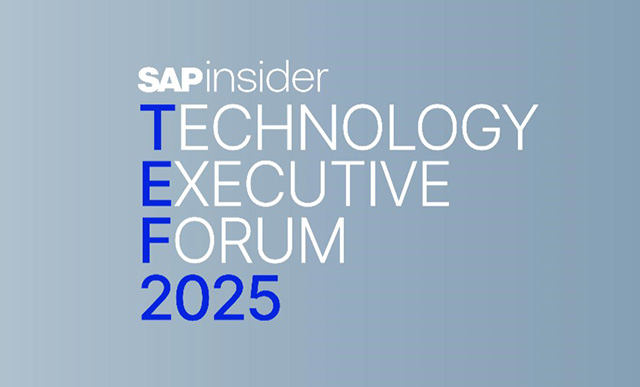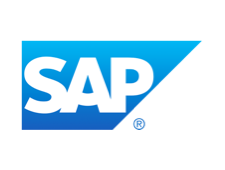SAP Trade Promotion Management
Filter By
Browse By
- SAP Analytics and AI
- SAP Application Development and Integration
- All SAP Application Development and Integration
- SAP ABAP
- SAP ABAP Development Tools
- SAP ABAP Test Cockpit
- SAP API Management
- SAP BAPI
- SAP Basis
- SAP BRF
- SAP Business Application Studio
- SAP CMS
- SAP Design Studio
- SAP Development Tools
- SAP DevOps
- SAP EAI
- SAP EDI
- SAP Extension Suite
- SAP Fiori
- SAP Fiori Elements
- SAP Integration Suite
- SAP Low Code Application Development
- SAP Low Code Automation
- SAP Netweaver
- SAP Release Management
- SAP UI5
- SAP Web Application Server
- SAP Web IDE
- SAP Business Process Management
- SAP Center of Excellence
- SAP CIO
- SAP Customer Experience
- SAP Data and Data Management
- All SAP Data and Data Management
- SAP BW
- SAP BW/4HANA
- SAP Crystal Reports
- SAP Data Archiving
- SAP Data Center
- SAP Data Governance
- SAP Data Integration
- SAP Data Migration
- SAP Data Quality
- SAP Data Services
- SAP Data Strategy
- SAP Data Visualization
- SAP Data Warehouse Cloud
- SAP DMS
- SAP Document Control
- SAP EIM
- SAP ETL
- SAP ETL Tools
- SAP HANA
- SAP HANA Administration
- SAP HANA Deployment Infrastructure
- SAP HANA Studio
- SAP Master Data
- SAP Master Data Governance
- SAP MDM
- SAP Enterprise Architect
- SAP Enterprise Asset Management
- SAP ERP
- SAP Finance
- All SAP Finance
- SAP Accounting
- SAP AR AP
- SAP Asset Accounting
- SAP Billing Systems
- SAP BPC
- SAP BRIM
- SAP Cash Management
- SAP Central Finance
- SAP Controlling
- SAP COPA
- SAP Cost Center Accounting
- SAP Currency Risk
- SAP e-invoicing
- SAP FICO
- SAP Finance Automation
- SAP Advanced Financial Closing
- SAP Financial Consolidation
- SAP Financial Planning
- SAP FX Risk
- SAP General Ledger
- SAP Global Tax Management
- SAP Hyperion
- SAP Order to Cash
- SAP Payment Processing
- SAP Profitability Analysis
- SAP Rebate Management
- SAP S/4HANA Finance
- SAP SWIFT Compliance
- SAP Treasury Management
- SAP Universal Journal
- SAP Governance Risk and Compliance
- SAP Human Capital Management
- SAP Intelligent Technologies
- SAP Platform and Technology
- All SAP Platform and Technology
- SAP Business Technology Platform
- SAP Cloud
- SAP Cloud Connector
- SAP Cloud Integration Platform
- SAP Cloud Migration
- SAP Cloud Platform
- SAP Cloud Providers
- SAP Cloud Strategy
- SAP Digital Signature
- SAP Container Platform
- SAP HANA Enterprise Cloud
- SAP Digital Asset Management
- SAP Smart Forms
- SAP HEC
- SAP Digital Integration Hub
- SAP Hyperscalers
- SAP Infrastructure
- SAP Messaging
- SAP Quality and Testing
- SAP Security
- SAP Spend Management
- SAP Supply Chain Management
- All SAP Supply Chain Management
- SAP APO
- SAP Asset Management
- SAP Business Network
- SAP Digital Manufacturing Cloud
- SAP Digital Twin
- SAP EWM
- SAP IBP
- SAP Inventory Management
- SAP Label Printing
- SAP Logistics
- SAP Manufacturing
- SAP Manufacturing Automation
- SAP MES
- SAP MII
- SAP MM
- SAP MRO
- SAP MRP
- SAP Order Management
- SAP Plant Maintenance
- SAP PLM
- SAP Production Planning
- SAP S&OP
- SAP SD
- SAP SPM
- SAP Supply Chain Planning
- SAP Track and Trace
- SAP Transportation Management
- SAP System Administration
What is Trade Promotion Management?
Trade Promotion Management (TPM) is focused on strategizing which promotional events have the greatest customer return on the invested marketing dollars. To determine this, companies must capture the expected promotional events, their costs, and the anticipated uplift.
Manufacturers and retailers require real-time visibility into their trade promotion landscape and adjust supply and demand parameters as business scenarios change. Through trade promotion, companies can expand their market share of specific products, better compete against competitors, and increase their retail partners.
With the use of technology, companies can optimize their trade promotion management by:
- Improving sales planning and budgeting
- Optimizing customer business planning
- Strengthening promotional planning
- Supporting execution and settlement
Key Considerations for SAPinsiders
What is Trade Promotion Management?
Trade Promotion Management (TPM) is focused on strategizing which promotional events have the greatest customer return on the invested marketing dollars. To determine this, companies must capture the expected promotional events, their costs, and the anticipated uplift.
Manufacturers and retailers require real-time visibility into their trade promotion landscape and adjust supply and demand parameters as business scenarios change. Through trade promotion, companies can expand their market share of specific products, better compete against competitors, and increase their retail partners.
With the use of technology, companies can optimize their trade promotion management by:
- Improving sales planning and budgeting
- Optimizing customer business planning
- Strengthening promotional planning
- Supporting execution and settlement
Key Considerations for SAPinsiders
- Improve effectiveness of trade dollars and supply chain by linking products in orders to specific promotions. According to Michael Debevec, President of Debevec Consulting, Inc., companies using TPM assign attributes to promotional spending that help them analyze actual results and compare the actuals to the original plans. “You assign each promotional event an identifier that you link to a new type of condition record, a campaign determination record,” he writes. “During order processing, you use the combination of customer, product, and date to determine if an active promotion is available. If one is available, the system stores the promotion identifier with the sales order line item.” Read the full article to learn more about the SAP TPM landscape and key system components.
- Avoid supplier stockouts by integrating trade promotion management with demand management planning. Planning a trade promotion with a retailer means ensuring product is available to meet expected demand. Not doing so leads to customer dissatisfaction and impacts to brand reputation and future sales. Manoj Ambardekar, an SAP subject matter expert with more than 20 years of IT and manufacturing experience, says to avoid stockouts, you need to determine the promotion uplift — the expected increase in demand beyond the baseline forecast. Doing so provides the total demand for a promotion. “TPM helps managers create a trade planning structure and gain visibility into trade promotions. Managers can identify the most profitable customers, fastest-moving product groups, and most effective types of promotions (e.g., end-of-aisle displays or front-page ads),” he writes. Read the full article to learn the configuration steps of a business scenario for a trade promotion.
634 results
-

 Premium
Premium
Business Drivers for SAP Trade Promotion Management
Reading time: 19 mins
Learn about SAP CRM Trade Promotion Management (TPM). Find out what the TPM solution landscape looks like, the components of TPM, how it affects order execution, and how can you tie actual shipments back to your original promotional plans. Key Concept SAP Trade Promotion Management enables a company to capture expected promotional events, their costs,...…
-

 Premium
Premium
Improve Promotion Execution with Responsive Promotion Management in SAP SNCResponsive
Reading time: 12 mins
SAoexperts/SCMLearn how using dynamic or reactive promotion management — rather than static promotion management — can reduce the risk for stock-out situations and overstocking at the retailer. This approach directly contributes to the success of a promotion and therefore to the company’s top-line results. Key Concept As part of the Responsive Replenishment scenario, the SAP...…
-

- SAP Accounting
 Premium
Premium
Track Intercompany Loans Using SAP’s Transaction Manager Module: Part I
Reading time: 39 mins
Learn the process flow, the integration points with other SAP modules, and the advantages of using SAP’s Transaction Manager for intercompany loans. Key Concept Intercompany loans are loans made from one business unit of a company to another, for various reasons. It is important to remember that intercompany loans are an asset (an investment) in one entity and...…
-
-

- SAP APO
 Premium
Premium
Manage Promotion Planning in SAP APO
Reading time: 13 mins
Learn how promotion planning can be configured in SAP Advanced Planning and Optimization (SAP APO) to model special events or promotions separately from the normal forecasting process. Follow a step-by-step procedure to configure and run the associated master data objects, run simulations, and interpret the results. Key Concept Promotion Planning is a special feature provided...…
-

 Premium
Premium
Avoid Stockouts by Integrating SAP APO DP and SAP CRM Trade Promotion Management
Reading time: 11 mins
Learn how to transfer trade promotions created in the Trade Promotion Management (TPM) function of SAP Customer Relationship Management to SAP Advanced Planning & Optimization Demand Planning (DP). If you plan for a trade promotion with a retailer but cannot meet the demand, it will lead to customer dissatisfaction and potential loss of future sales....…
-

 Premium
Premium
Trade Promotion Management: Ensure a Promotion Uses the Right Buying Pattern
Reading time: 18 mins
Learn how mySAP CRM Trade Promotion Management uses the data within buying patterns to distribute the predicted promotional volume. Then find out why the system might override a default buying pattern and what you can do to avoid this. Key Concept Trade Promotion Management (TPM) helps you plan and execute trade promotions. A part of...…
-

- SAP Accounting
 Premium
Premium
Track Intercompany Loans Using SAP’s Transaction Manager Module: Part 2
Reading time: 49 mins
Learn the configuration steps needed for the intercompany loans process outlined in the article “Track Intercompany Loans Using SAP’s Transaction Manager Module, Part 1.” The configuration is in line with the process described in part 1 of this article. Key Concept When companies reach a more complex size, they often need to implement financing processes...…
-
-

 Premium
Premium
A Step-by-Step Guide for Using Promotion Management in BusinessObjects 4.1
Reading time: 12 mins
Learn how to use the BusinessObjects 4.1 Promotion Management application to migrate content from environment to environment. This easy-to-follow, step-by-step guide provides descriptions and illustrates every phase of the content-migration process. Key Concept The Promotion Management application is a useful tool included in the BusinessObjects 4.1 suite that allows content (e.g., users, groups, folders, reports,...…
-

- SAP Cash Management
 Premium
Premium
A Guide to SAP’s Credit Risk Analyzer
Reading time: 45 mins
SAP’s Credit Risk Analyzer sub-module focuses on measuring, analyzing, and controlling counterparty risks. Learn how to use and configure it. Key Concept The Credit Risk Analyzer includes a risk control through limits and flexible limit management with online monitoring and reporting. This functionality allows corporate executives to set limit controls in their SAP systems, monitor...…
-

- SAP Accounting
 Premium
Premium
An Overview of Using the Credit Facility Functionality
Reading time: 21 mins
Learn the process flow, the integration points with other SAP modules, and the advantages of using SAP’s Transaction Manager for credit facilities. Key Concept Most companies have credit facilities with their primary bank. SAP’s Transaction Manager module can be used to support the life cycle of credit facilities. The credit facility functionality is included in...…
Become a Member
Unlimited access to thousands of resources for SAP-specific expertise that can only be found here.
Become a Partner
Access exclusive SAP insights, expert marketing strategies, and high-value services including research reports, webinars, and buyers' guides, all designed to boost your campaign ROI by up to 50% within the SAP ecosystem.
Upcoming Events
-

SAPinsider Technology Executive Forum
December 02 - 03, 2025
Phoenix, Arizona
United States
View Event
Related Vendors
Your request has been successfully sent

